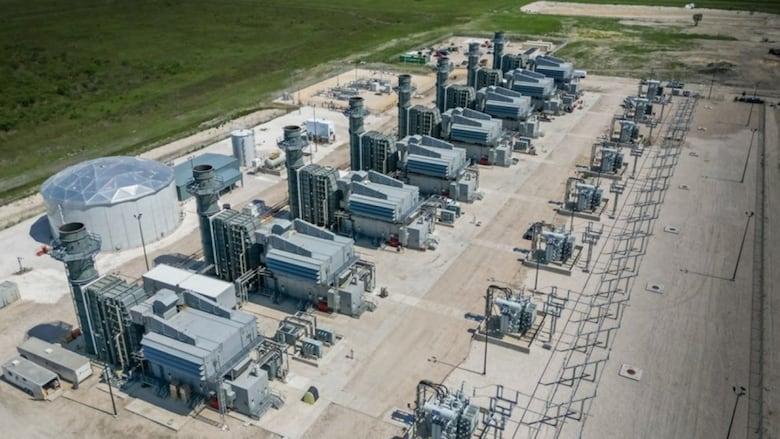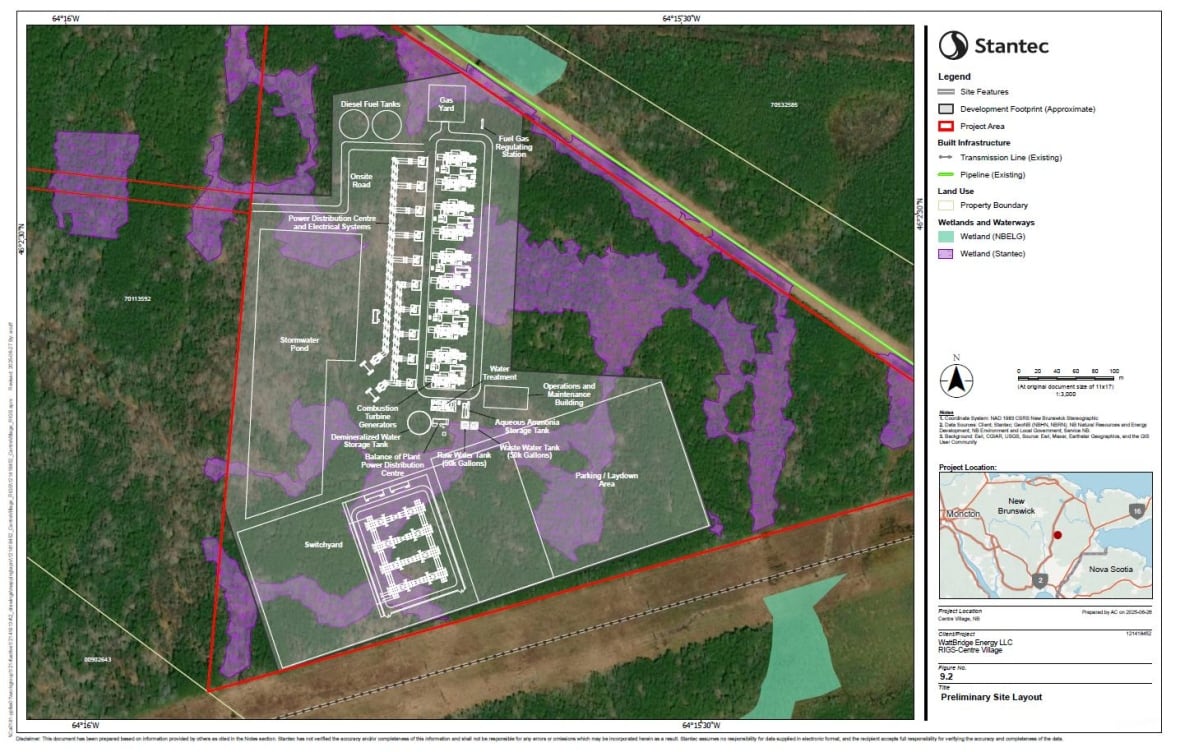N.B. Power, U.S. company pick Tantramar site for natural gas plant
Private developer says new facility with Mi’kmaw partners will allow for more renewable energy

N.B. Power has changed the location of a proposed natural gas plant it wants to see built in southeast New Brunswick, opting for a remote location in the Tantramar area instead of a site in Scoudouc.
The plant would begin operating in 2028 and would be able to generate 500 megawatts of electricity, most of it to meet growing demand caused by population growth.
It would also emit greenhouse gases, though N.B. Power said last year there would be a net reduction in emissions provincially because the new plant would provide backup generation for an increasing share of wind and solar energy on the grid.
"Today, for example, there's 400 megawatts of installed wind energy in New Brunswick and only about 40 megawatts is producing electricity," Brad Coady, N.B. Power's vice-president of business development, said in an interview.
"What we're looking for is nimble machines that can come on, come on quickly and only stay on as long as is needed to integrate that wind energy. It'll fill in the voids when the wind isn't there and the sun isn't there."
The plant would be built by Missouri-based ProEnergy and operated by its subsidiary, Rigs Energy Atlantic, which includes a minority equity investment from the North Shore Mi'kmaq Tribal Council made up of seven First Nations.
John MacIsaac, who is heading the project for private developer ProEnergy Canada, said the plant will allow N.B. Power to reduce its overall greenhouse gas emissions by 250,000 tonnes a year.
The 20-hectare site is in Centre Village, along Route 940, within the municipality of Tantramar.
It's where the Maritimes and Northeast natural gas pipeline crosses paths with an N.B. Power transmission line.
The plant would draw gas from that pipeline to run 10 turbines that would generate power to sell on the grid under a 25-year purchase agreement.
The assessment submission says the Tantramar site was chosen after consultations with the Mi'kmaw council, which said there would be fewer environmental impacts than at the Scoudouc site.

If the plant is approved, preliminary work would start in early 2026, and it would be operating by the third quarter of 2028.
MacIsaac said his figure of a 250,000-tonne net reduction in N.B. Power's greenhouse gas emissions came from ProEnergy's discussions with the utility.
A utility spokesperson gave that figure last year and said the reduction would come from avoiding the use of coal at the Belledune generation station and fuel oil at Coleson Cove — both of which emit more carbon dioxide — to back up renewables.
But that calculation was based on what the spokesperson said would be 100,000 tonnes of greenhouse gas emissions from the gas plant itself in its first year of operation.
ProEnergy's assessment document says it would emit more than 910,000 tonnes.
Neither MacIsaac nor Coady were able to explain the difference in the two figures.
N.B. Power officials said in 2023 that they had come close to not being able to meet the demand for electricity in the province during a February cold snap.
Since then, the utility has faced lengthy shutdowns at two power plants and is now planning for the phaseout of coal from its Belledune generating station by 2030.
The application says the utility had calculated it would need more generation in the early 2030s but now believes it may require it by the winter of 2028.
Asking people to cut back on consumption wouldn't reduce demand enough, it says.
Coady said N.B. Power would use 400 megawatts from the plant, about 80 per cent of its capacity, and the additional 100 megawatts could be part of a future agreement to supply other provinces.

"There's potential there, there's opportunity there, and I'll say we're working on it."
The project will go through a federal environmental impact assessment. Provincially, the environment minister can waive the need for a separate process based on the recommendation of a technical review committee.
The plant will also use ultra-low sulphur diesel as a backup fuel.
It could eventually use hydrogen — a gas often touted as an even cleaner alternative — but the submission says it is "currently not technically or economically feasible."


